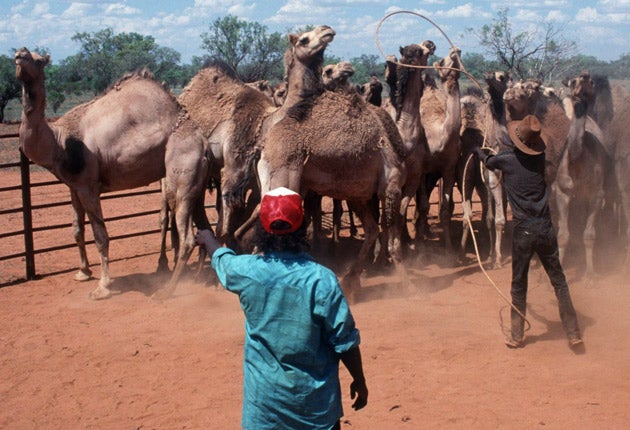New solution to an outback pest: put another camel on the barbie

Overseas visitors to the outback are often delighted to see kangaroos hopping across the sunburnt plains. But what on earth, they wonder, are camels doing in the depths of the Australian interior?
During the 19th century, thousands of camels were imported into Australia, where they were used for long-distance exploration and to transport people and goods to remote spots. But when cars and trains took over in the 1920s, they were released into the wild and now they have reached plague proportions, with more than a million roaming the outback.
A culling programme began last year, but now an Egyptian businessman, Magdy El Ashram, has come up with an alternative solution. He wants to build a massive abattoir and processing plant, and to export camel meat to dinner tables around the world.
Such exports already take place on a small scale, but Mr El Ashram has grand plans. If his project for the rural town of Point Pirie, in South Australia, is approved, his aim is to develop the country's largest abattoir, capable of processing 100,000 animals a year.
"Camel is a popular food in the Middle East, North Africa and Europe, and Australia has the resources to provide meat to people who like it," he told the Associated Press.
Camel meat is marketed as a low-fat, low-cholesterol alternative to beef. Exporters say there is demand for camel milk, leather and wool. Camel oil is used in soap and cosmetics, and even camel urine, apparently, has its fans; some manufacturers use it in hair and skin products. Live camels are also exported – even to countries assumed to be awash with them, such as Saudi Arabia.
In Australia, on the other hand, farmers regard camels as major pests.
They compete with native animals and livestock for food and water, trample native plants and damage fences, bores and tanks. At the height of the drought a few years ago, they rampaged through an isolated community in Western Australia, smashing toilets, taps and air conditioners in a frenzied effort to find water.
Their ancestors were more decorous creatures. Approximately 12,000 were imported, mainly from India and Pakistan, and they helped to open up the vast continent. Twenty-six accompanied the ill-fated expedition to cross Australia from north to south in 1859, led by Robert Burke and William Wills. Neither man returned alive, and nor did any of their camels.
As the continent was mapped and settled, camels were used to travel to far-flung cattle stations, Aboriginal missions and mining camps.
They were also employed in the construction of the Overland Telegraph line and of a railway across the desert – which was called the Ghan, after their handlers, believed to come from Afghanistan.
After being released into the wild, the camels established free-ranging herds in semi-arid areas and began to breed. Nearly a century on, they are said to be reproducing at a rate that doubles their numbers every nine years, and to be wreaking A$10m (£6.5m) of damage a year to fragile ecosystems.
Mr El Ashram said that, since wild camels fed largely on grasses, their meat could be considered a high-quality "organic" alternative.
He admitted that if the camel was old, the meat could be "a bit chewy". If approved, he said, his project would create up to 300 jobs.
Join our commenting forum
Join thought-provoking conversations, follow other Independent readers and see their replies
Comments
Bookmark popover
Removed from bookmarks